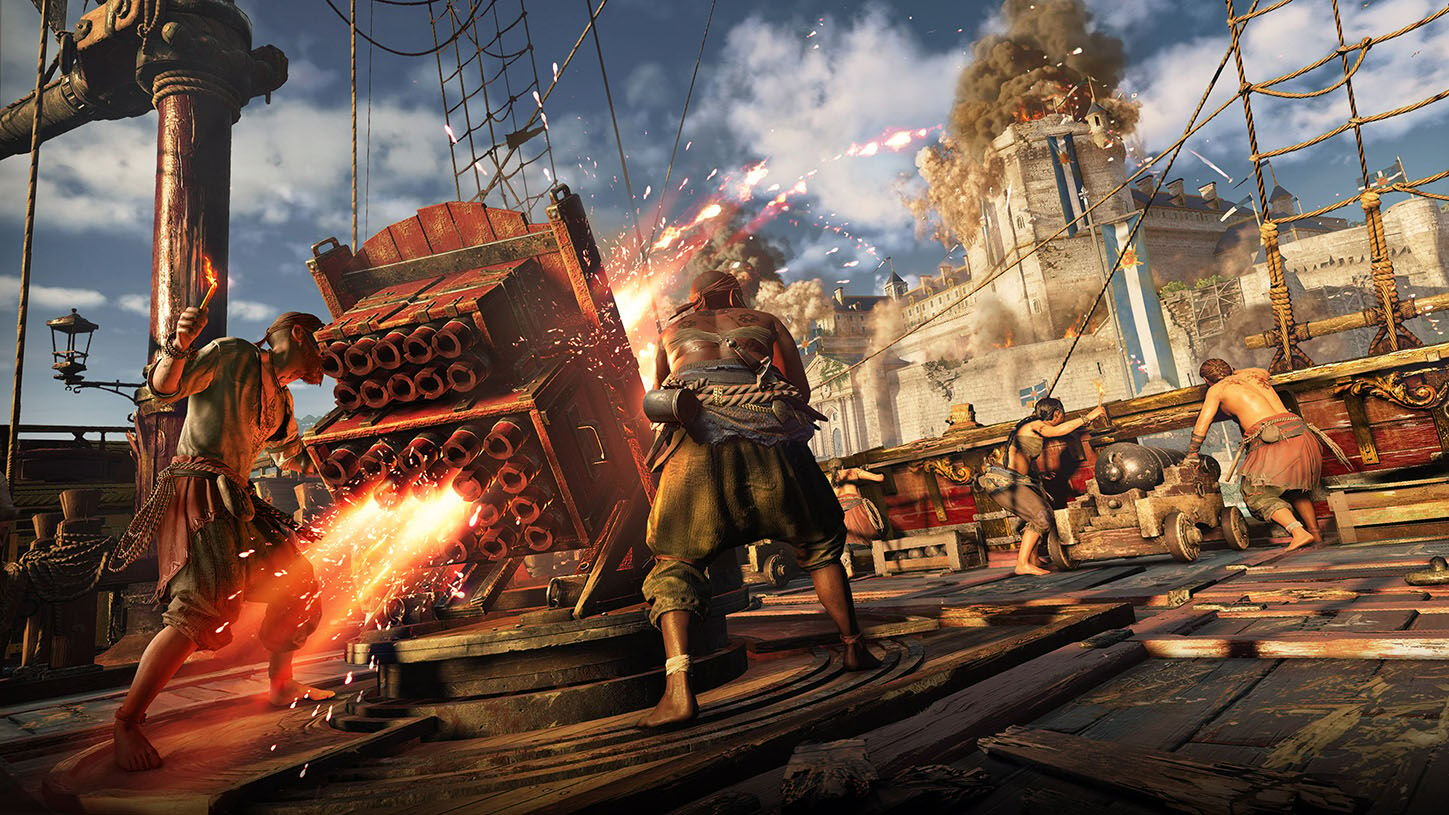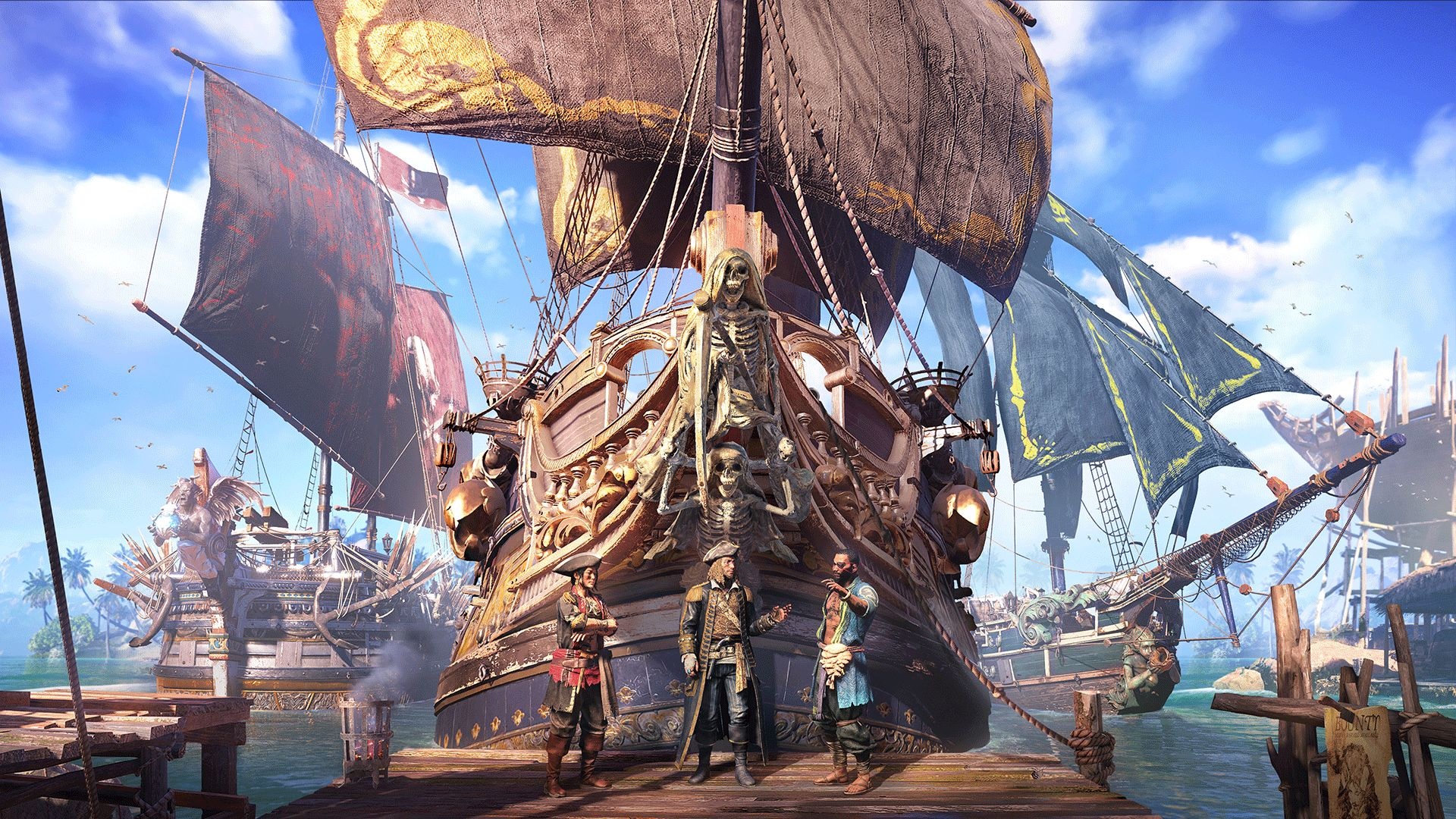Skull and Bones PC Performance Review
Conclusion
Conclusion What we think of Skull and Bones
Skull and Bones took a long time to move from concept to reality. The game’s problem during development are well documented, and I am sure that many gamers are surprised that the game has released at all. That said, we are mainly here to talk about the game’s technology and PC performance, so let’s get started.
I’ll start by saying that Skull and Bones heavily pushed temporal upscaling. All of the game’s graphical presets use some form of TAA upscaling. Ubisoft wants this game to appeal to as many gamers as possible, so I guess it makes sense to utilise upscalers to lower this game’s hardware requirements. Even so, I feel that Ubisoft have not used upscaling as effectively as they could have.
Upscaling
Skull and Bones’ default TAA upscaler isn’t great. In my eyes, both AMD FSR 2 and Nvidia DLSS provide better upscaling results. Furthermore, I have found that both DLSS and FSR 2 deliver higher framerates when using equivalent profiles to this game’s TAA upscaler. If I am honest, Ubisoft Singapore should have made FSR 2 this game’s native upscaler, or used DLSS as their default Nvidia RTX upscaler and FSR 2 as the game’s default for everything else. When FSR 2 and DLSS gives better visuals results and higher framerates than Ubisoft’s default TAA upscaler, why not make them the default upscaling option?
It’s also strange to see that Skull and Bones hasn’t opted to support either DLSS or FSR 3 Frame Generation. While Skull and Bones is an online game, the latency penalty of these techniques is not a major concern if you aren’t aiming to battle other players in PVP. Regardless, it is a shame that Ubisoft’s so-called “AAAA” game lacks this cutting-edge PC technology.
CPU-wise, Skull and Bones is not an overly demanding game during most gameplay sections. However, some of the game’s on-foot hub areas can be GPU-limited. This made it difficult to reach framerates of over 80 FPS on our i9-13900K processor. This is a strange performance issue given how non-interactive a lot of these areas are, and a clear sign that some areas of the game can be better optimised. That said, the game runs a lot better at sea, where the real gameplay of Skull and Bones is.
Optimised Settings
Using our optimised settings, as detailed on page 4, we managed to achieve a performance boost of over 43% on an Nvidia GeForce RTX 4070 graphics card at 4K. With further settings reductions, or upscaling, we can achieve larger performance gains. Overall, Skull and Bones is very scalable on PC, allowing most PC gamers to play this game at 60+ FPS. Well… assuming you use a suitable resolution for your graphics card.
Overall, Skull and Bones is a fairly well optimised game release on PC. That said, I find this game hard to recommend, even if you want to play a pirate game. Despite its age, Assassin’s Creed 4: Black Flag is still a great game, and I think it is better than this long-awaited pirate spin-off. Skull and Bones doesn’t even allow players to board other vessels and fight their crew. All we get in this game is a cutscene. If I took one thing away from playing Skull and Bones it’s this. I want to replay Black Flag!
You can join the discussion on Skull and Bones’ PC performance on the OC3D Forums.





